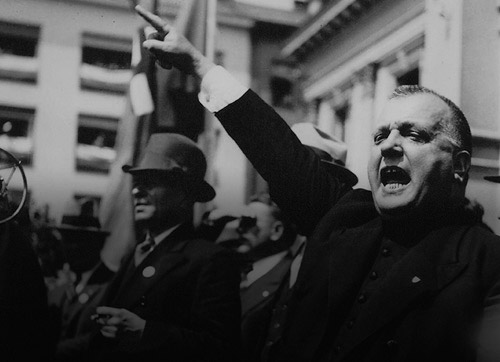sen  skutočnosť
skutočnosť
Events of the slovak state in four chapters
One nation, one party, one leader, but also more than 70,000 victims - the period of 1939 to 1945 is among the most complex in Slovak history.
This website accompanies the exhibition "Dream × Reality: Art and Propaganda 1939 - 1945" by adding historical context illustrated with multimedia content.
You can view the exhibition as a 360° panorama tour. Click the artworks in the panorama to see more info from Web umenia and zoom at high-res.
See exhibition in 360°
chapter 1
Halfway to the Slovak State
View more
In 1938, Slovakia was part of the Czechoslovak Republic, although there was a strong push towards autonomy among the people. Hlinka''s Slovak People''s Party''s pursuits of autonomy within Czechoslovakia and Hitler''s plans to divide the republic all had a role to play.
Continue to chapterPublished on November 7

chapter 2
One Nation, One Party, One Leader
View more
In the early days of its existence, the Slovak State had to set up its government, deal with the impact of recent events on the economy and claim its place in Europe, which was heading towards war.
Continue to chapterPublished on 6 December

chapter 3
70,000 Victims
View more
The persecution of the Jewish minority in Slovakia by the government had already began during the days of autonomy, but after the creation of the independent state, anti-Semitic measures became a part of official legislation and regulations. This process of taking away the rights of the Jewish population culminated in the mass murder in concentration camps.
Continue to chapterPublished on 10 January

chapter 4
Waking Up From a Dream
View more
The Second World War had an increasingly negative impact on Slovak society, resulting in more vocal opposition. The partisan movement, along with the concerns of the populists, was growing. The end of the war would spell the end of Slovak independence.
Continue to chapterPublished on 6 February